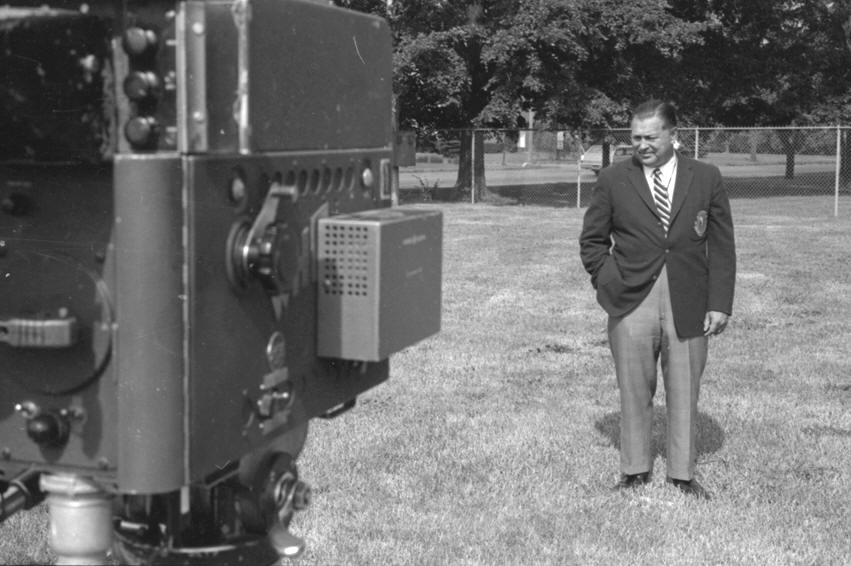
STRAIGHT DOWN THE MIDDLE WAS WCNY'S INAUGURAL PRODUCTION
CALLING THE SHOTS
Bill Upwood made the move from Michigan to become the station’s production supervisor. "I had 11 years experience in TV production/engineering in Detroit and New York City,” explains Upwood, “but I wanted to get back into Educational TV. At WCNY, I was the only one on the staff who had any significant production experience with lighting, video, audio, and directing.”
Upwood’s versatility would be tested daily once the Liverpool facility was converted into a television station in June of 1966. Studio operations on Old Liverpool Road started with one 40’X 48’ studio and a director/audio mixer booth. Engineering was adjacent the studio control room through a glass partition.

STRAIGHT DOWN THE MIDDLE WAS WCNY'S INAUGURAL PRODUCTION
Channel 24’s first locally produced program, Straight Down the Middle, presented a series of golf lessons produced in association with the Syracuse area Professional Golfers Association (PGA). Using cameras borrowed from WHEN-TV's remote unit the program was videotaped on the station's front lawn. As the schedule expanded, WCNY efforts for the Syracuse School District featured programming shown in classrooms on a variety of topics including art, history, and shop.
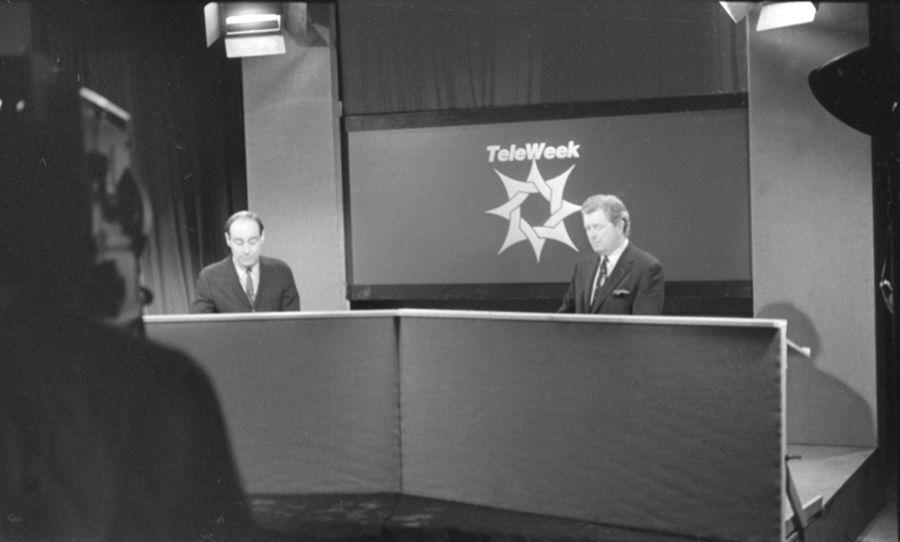
CNY TELEWEEK HOSTED BY CARL EILENBERG AND CERID REED
The station’s most ambitious weekly production was a news magazine, CNY Teleweek. Hosted by Carl Eilenberg and Cerid Reed, Teleweek combined live segments with film reports in a newsmagazine format .
Upwood deftly scheduled shows taped for later broadcast between the production of live programs. “Most of what we did early on was talking heads,” he explains. “We had background flats that were painted on both sides, so it became a matter of ‘flipping’ them for the next program.”
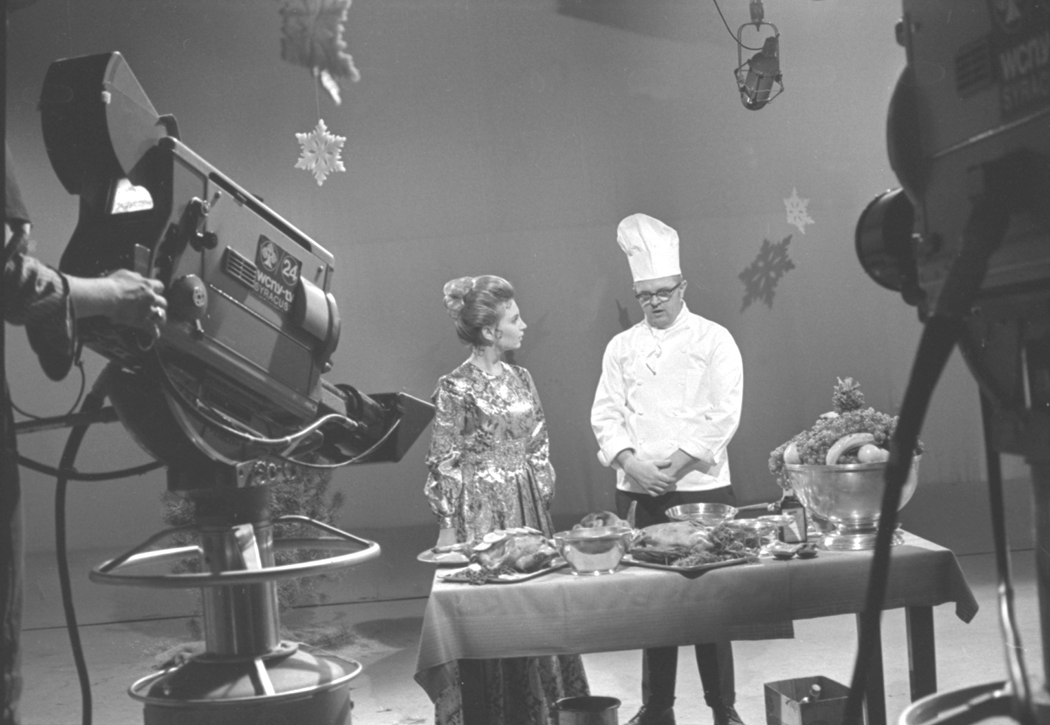 |
 |
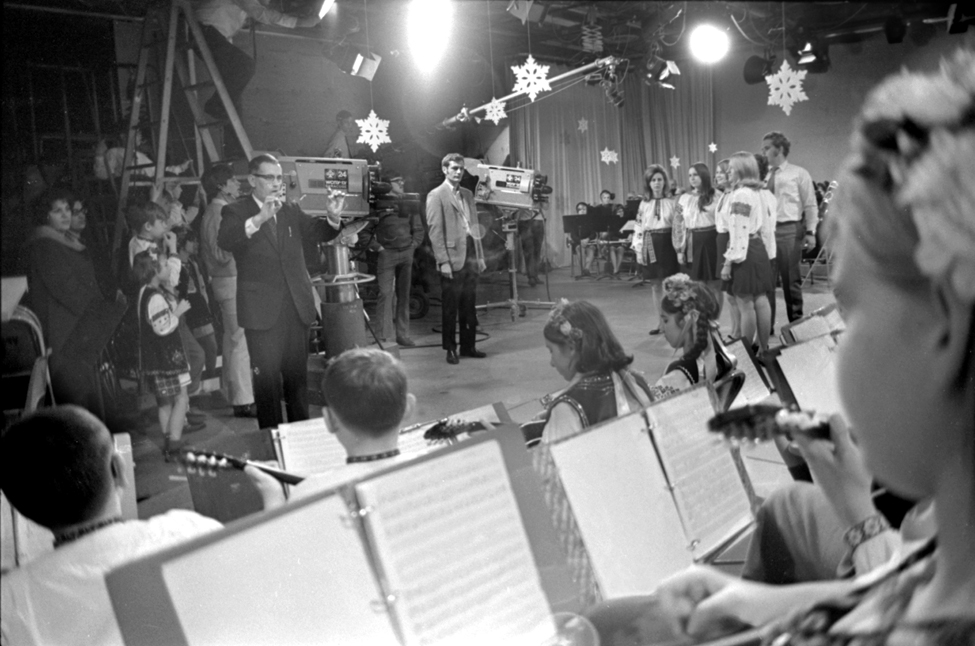 |
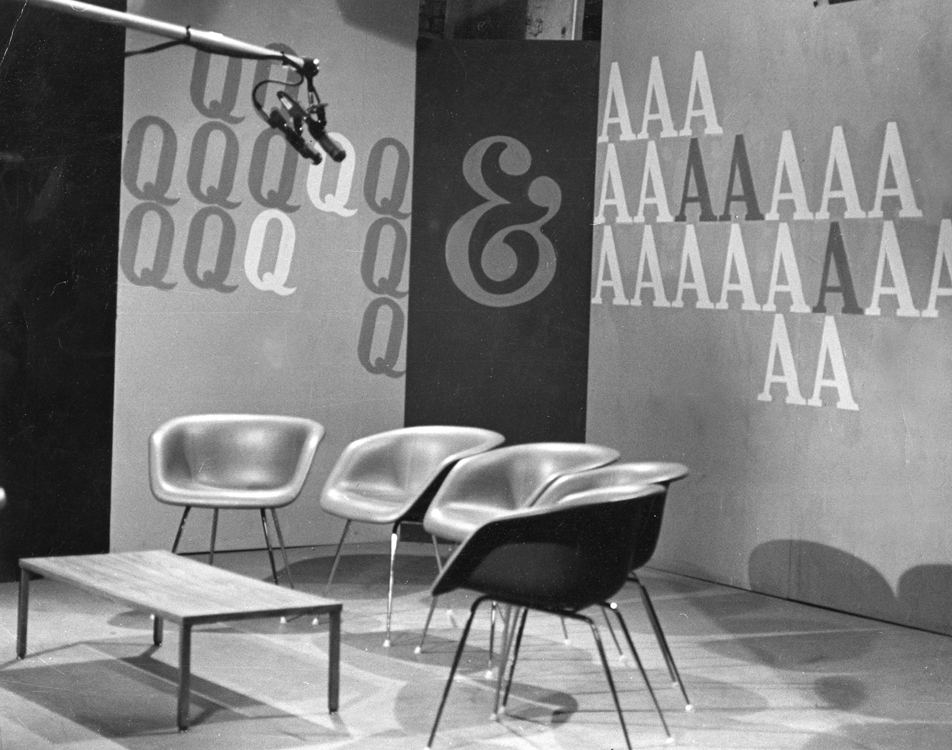 |
A VARIETY OF PROGRAMS WERE PRODUCED IN WCNY'S SINGLE STUDIO. SETS WERE
SIMPLE AND OFTEN
DESIGNED WITH REVERSIBLE SIDES FOR QUICK CHANGES BETWEEN LIVE PROGRAMS.
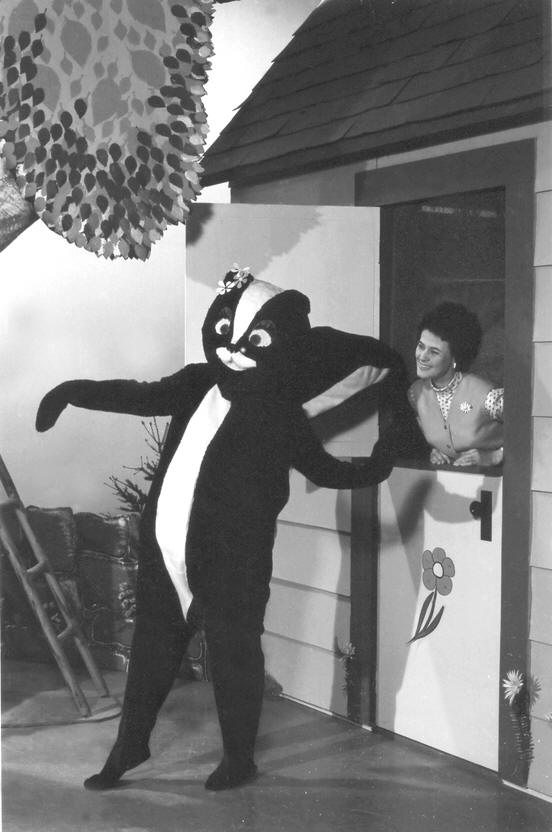 |
The station hired producer/directors Harry Cunningham and Art Irons to provide additional local programs. Cunningham supervised a variety of remote and studio programs such as Ladybug’s Garden, while Irons served as on-camera host for the weekly Art’s Forum, featuring interviews on topics of the day such as atheism and school rebellion. Other Art's Forum programs focused on local artists who worked in illustration, sculpture, photography, music, and film. (Left and Right - "Ladybug's Garden") |
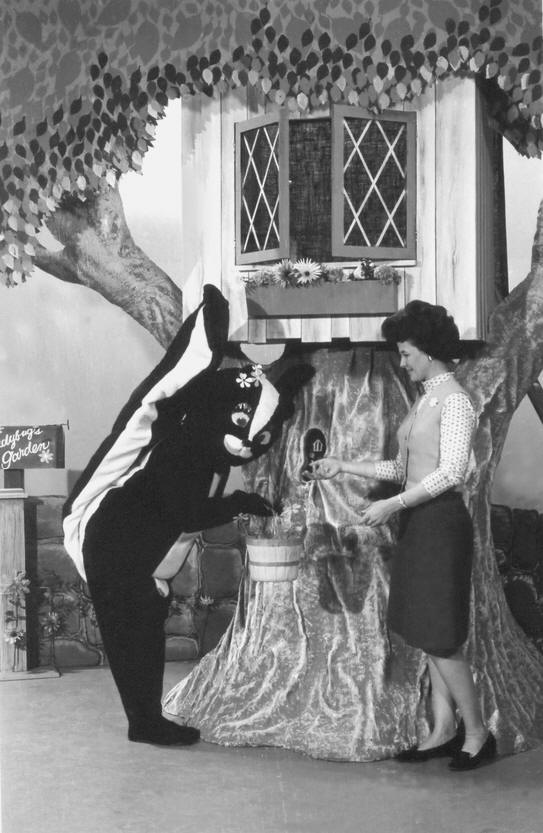 |
The station’s modest payroll precluded a permanent production staff: “With only a couple of people on staff we had to make use of part-time people," Upwood explains. "For a typical show we usually needed three camera people, a stage manager and an audio board operator. We would bring people in and if we were a little short and I wasn't directing, I would become a crew person running camera. In the director’s booth you had a T.D. (technical director; responsible for taking cues from the director to select cameras) sometimes, but most often the director switched his own program.”
Part time staffers were often students from Syracuse University, renowned for its Newhouse television school. The pay was $1.25 per hour for part timers such as Dick "Cato" Calagiovanni, who later became production supervisor, Ron Friedman, Peter Schuck, John Cadley, Steve Parton, and Dave Williams. High school volunteers began knocking at Upwood’s door including 17-year-old Russ Tarby (his father invented Syracuse’s famous 'Tarby Burger') and 16-year-old Mike Clark.
 |
“It was my first job in
television,” states Clark, who logged 25 years at Sony Pictures Television in Los
Angeles. “WCNY was a wonderful training ground for production people
because we did it all…studio shows, remotes, auctions, news programs. The
idea was that every production person should be able to run any piece of
equipment in the studio, and it worked out very well. The experience I
gained at WCNY served me later at WTVT in Tampa and for Sony in Los
Angeles.” Left - Mike Clark operating the microphone boom |